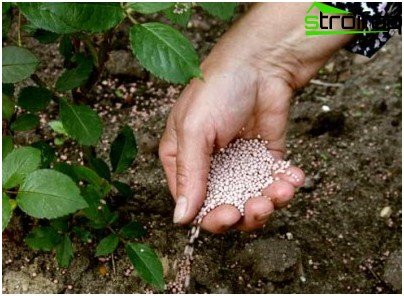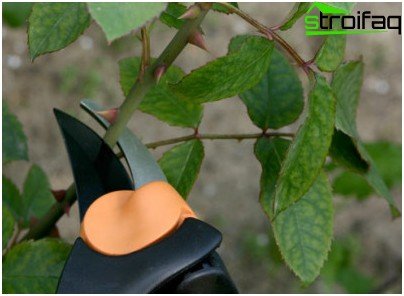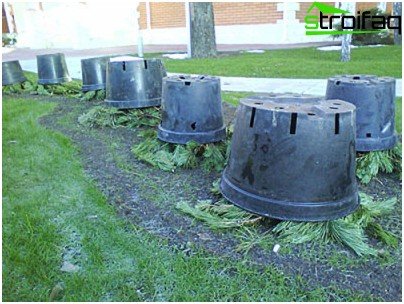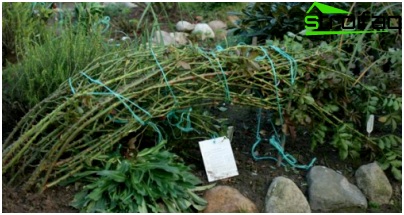Sheltering roses for the winter is a rather laborious process. First you need to prepare the plants, and then gradually cover them. The choice of shelter method depends on the region, the variety of the rose bush and the personal experience of the gardener. The main thing is not to rush, wait until the soil freezes, and only then reliably close the ends of the structure. It is necessary to open rose bushes in a timely manner so that the plant does not sprout.
Content
- Problems and goals of sheltering roses for the winter
- Preparing rose bushes for the winter
- Materials and methods for sheltering roses for the winter
- Features shelter climbing roses
Problems and goals of sheltering roses for the winter
How to preserve roses in winter, what type of shelter is best and whether it is worth making at all, every gardener decides on his own. There are many methods, each of which has its own advantages and disadvantages. To cover and open roses is necessary gradually. These activities carry certain risks. For example, in the spring you should not rush to open roses.
If the sun shines brightly enough, and the earth is still frozen, then the awakened kidneys will not get enough moisture. In addition, the plant weaned during the winter from the light, and young foliage can easily burn. This problem is called “physiological drought.” However, delaying the opening of roses is also not worth it..
During the spring thaw, the flowers may vytryat. The same danger threatens with premature shelter of plants with the first frost, because there is a high probability of a temperature jump. In addition, you can increase the chances of rose bushes for a successful winter, if you give them the opportunity to harden in natural conditions.

To shelter roses, gable structures are used that need to be fixed on the ground with pegs so that they do not move apart under the pressure of snow
Shelter roses for the winter to be made with the aim of:
- prevent freezing of the roots and the site of vaccination in snowy frosty weather;
- do not allow rodents to feast on the stems of plants;
- to shelter roses from early exposure to the sun and prevent burns;
- maximize plant shoots.
Preparing rose bushes for the winter
Gardeners are primarily interested in the question of how to prepare roses for winter. Nitrogen fertilizers stop applying at the end of summer. Instead, you can make a couple of strengthening root dressings.
- The first is made in August. To prepare a nutrient solution, 25 g of superphosphate, 10 g of potassium sulfate, 3.5 g of borax or 2.5 g of boric acid are added to water (10 l). Feeding is enough for an area of 4m2.
- The second top dressing is carried out in the first half of September. 16 g of potassium monophosphate or potassium sulfate and 15 g of superphosphate are placed in a solution (per 10 l of water).

Rosary soil can be fed with granular fertilizers
It is good to feed roses with foliar fertilizers for which similar products are prepared, while you need to take three times less active components. Also in September, it is necessary to stop loosening the earth and the formation of rose bushes, which will prevent the development of young shoots. If they nevertheless began to grow, then they pinch them. The buds that appeared in autumn need to be bent at the base, otherwise the plant will have time to deplete before the winter season.
In general, caring for roses for the winter is aimed at inhibiting plant growth. In the southern regions, the entire preparatory package of activities can begin in September, and in the northern regions from August. During heavy rainfall in autumn, the amount of incoming moisture in the rose garden should be reduced by arranging a film cover or small grooves to drain excess water.
Materials and methods for sheltering roses for the winter
Having the necessary knowledge on how to save roses for the winter, you can proceed to a set of measures to shelter the bushes. Begin by tearing off the foliage. You should also remove thin shoots that can rot under cover. In the southern regions, many varieties of roses winter well after pruning and hilling. You can only cover if the soil is completely frozen.

Before the cold season, it is necessary to remove weak shoots and leaves, which can easily become a source of rot.
If it is not possible to trace the roses, then they are simply cut to 35 cm, mulched with compost. Three buckets of land is enough to cover the bush completely. It is better to prepare and store compost soil in advance in the house so that it does not freeze and is not saturated with moisture. Such material is ideal for hilling, because, for example, a mound of sand conducts cold, and roses freeze, and a mound of sawdust is dangerous for the development of fungi and mold. If the winter is snowy – you should not worry, because a layer of snow will reliably protect plants.
The construction of shelters is especially important for regions with cold, but not very snowy winters. You can go in several ways: build a frame, make a flooring from roofing material, polyethylene, cover the roses with boxes, plastic flower pots, cardboard boxes or put a spruce branch from pine or spruce branches. Having decided how to shelter the roses for the winter, proceed to the construction of the structure. It’s good to combine several options. For example, it is advisable to install the frame, put on top of the roofing material, then spruce branches and a plastic film to protect against moisture.

You can cover roses with spruce branches and a large plastic pot
Features shelter climbing roses
Shelter of climbing roses for the winter has its own characteristics. First of all, in October, the lashes are removed from the supports. If they bend well, they are lowered and tied to a peg driven into the ground. Sometimes this is not so simple. Then the lashes are lowered in stages, gradually pulling them lower and lower to the ground. You can bend them, tied to a bucket filled with sand, which gradually lags further.
It is advisable to put roofing material and a layer of lapnik on the ground to prevent contact of climbing roses with frozen soil. The next step is to remove the leaves, and this procedure is carried out in several stages, starting from the bottom of the bush. It is necessary to break them off already at subzero temperature. Then the lashes bind and wrap with any material that the mouse cannot bite.
After freezing the soil, the base of the bush is mulched with several buckets of compost soil. Roses for the winter must be processed to prevent fungal diseases. You can erect the necessary shelter above the lashes. To hold snow over the structure, shields can be made, and the entire structure strengthened at the edges with bricks. A spruce twig is designed to scare away rodents. It will not be superfluous to spread poisoned baits along the perimeter. Shelter should be erected gradually, completely closing the ends only after the temperature drops to -5-10?.

Chain roses should be bent to the ground carefully so as not to break
How to cover roses for the winter? It is difficult to answer unequivocally, because a lot depends on the plant variety, on climatic conditions. Some roses winter well after pruning and hilling with compost soil, while others are unlikely to endure a harsh winter without reliable shelter from roofing material, spruce branches and polyethylene. The main thing is to do everything in a timely manner so that the plant does not freeze and sprout.






